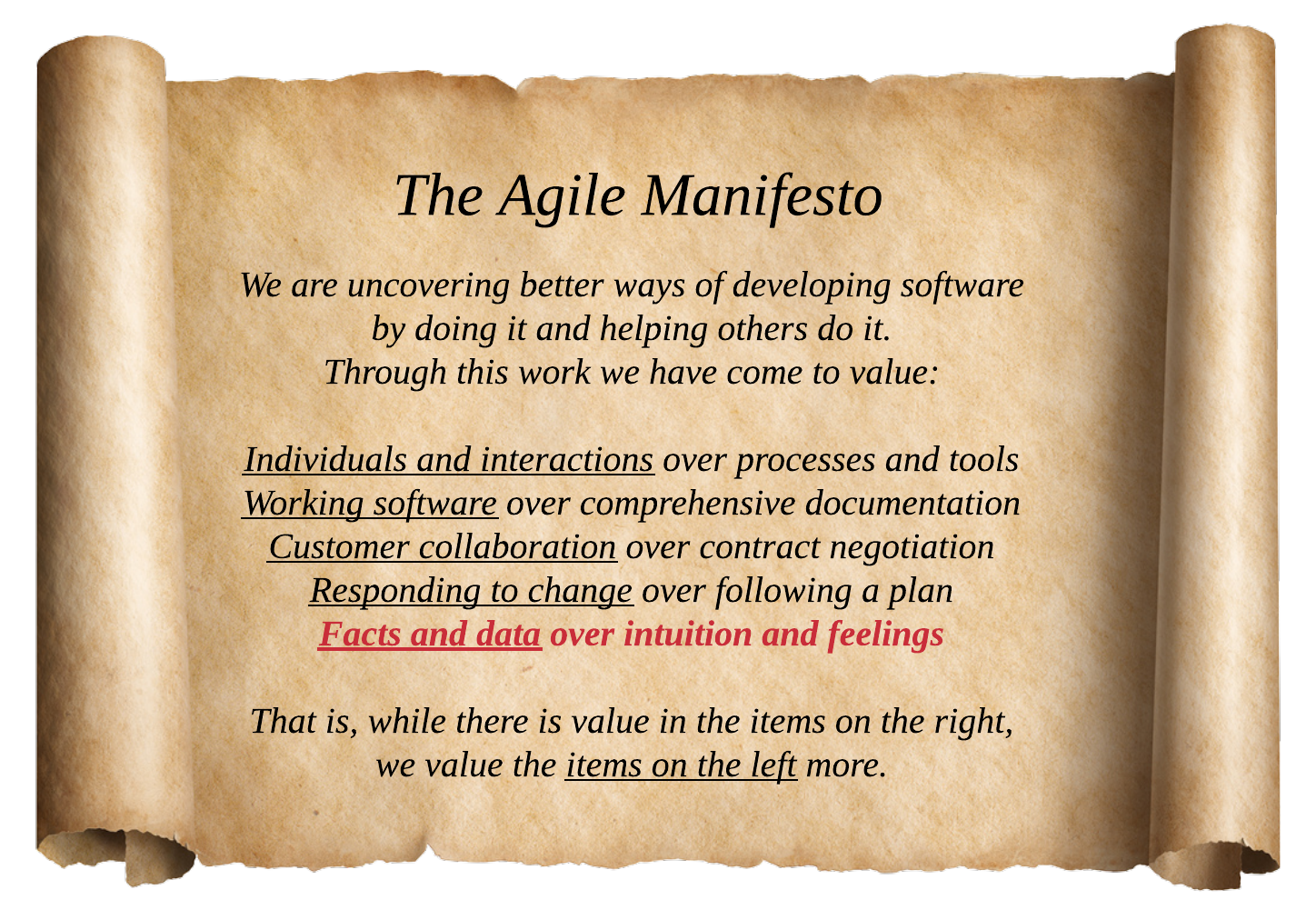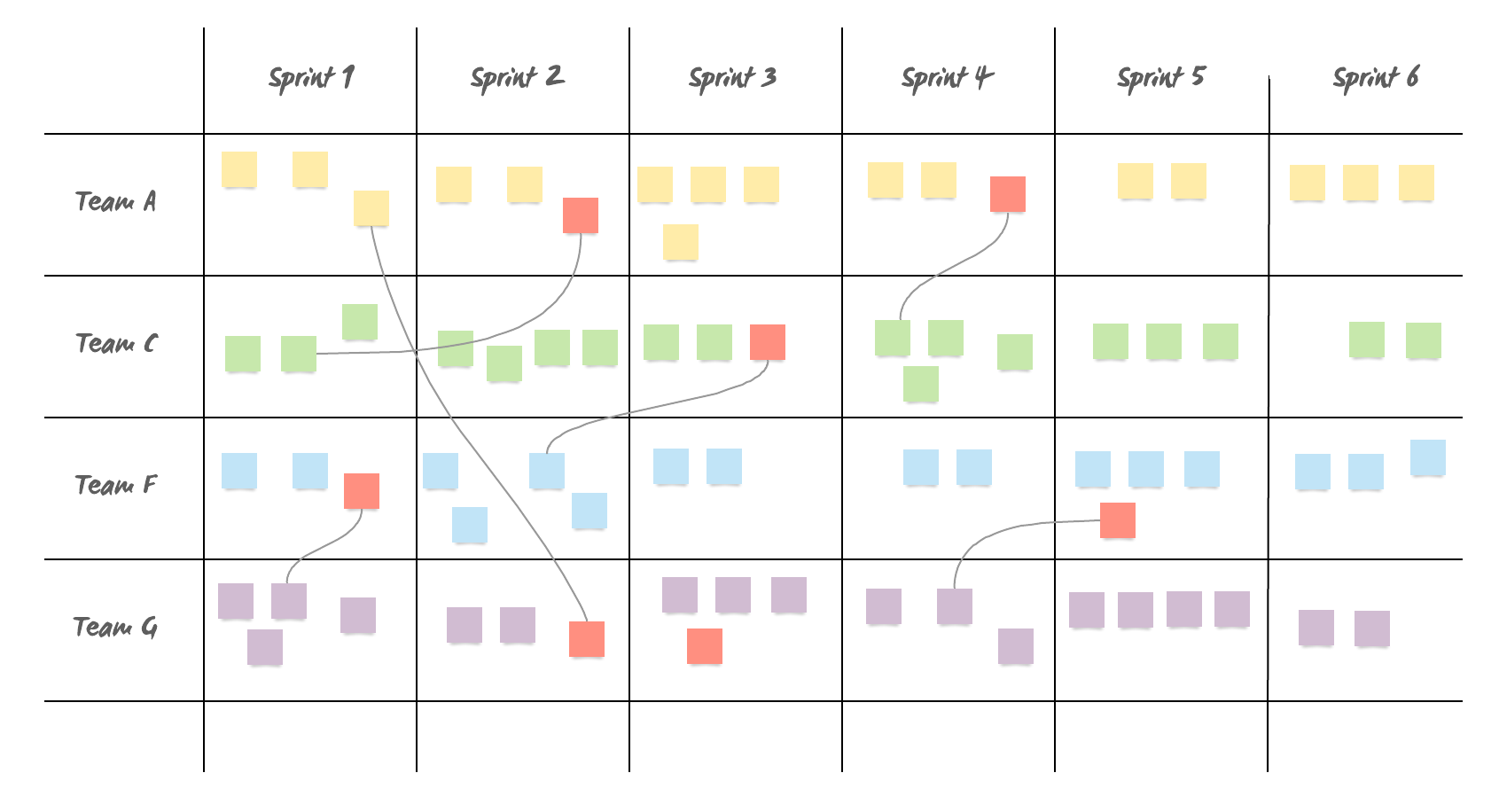
Is it Time to Amend the Agile Manifesto?
June 17, 2019
Story Mapping Webinar Slides
September 29, 2022Key Points:
- “Big Room Planning” or “Program Increment Planning” is a Scaled Agile tool but can be effectively adapted for other purposes.
- The “all-hands” meeting is an important communication mechanism, but not very effective in creating employee alignment and engagement.
- Company-wide Big Room Planning can create better alignment and engagement and has many other benefits.
The “All-Hands” Meeting
Most of us have participated in an “all-hands” meeting. They happen quarterly in most companies. You probably know the routine:
- Employees gather in one location or call in individually or in groups.
- The CEO speaks on the current state of the company.
- The CFO shows charts and graphs on financial performance.
- The VP of Sales presents past and projected sales numbers.
- Divisional VPs give PowerPoint updates on the work that their teams are doing.
- Time is left at the end of the meeting for general questions from staff.
- Everyone goes back to work and forgets about the all-hands meeting.

There’s no doubt the all-hands meeting has value; people want to feel connected to the mission of their company. But if employee engagement and alignment are the goals, then the all-hands meeting isn’t working. Most employees are only passively interested, and many ignore it completely.
Imagine if everyone in the company was actively involved in quarterly planning. Imagine if there was a clear link between the work of every team and individual to the high-level objectives of the CEO? How might that change things?
What is “Big Room Planning”?
Big Room Planning, or “Program Increment (PI) Planning” as it’s called in the Scaled Agile Framework, is a technique used to scale agile software development across many teams that are interdependent.
Suppose a product requires work from multiple teams and multiple divisions in order to create customer value. Ideally, we would restructure the organization and create a single cross-functional team for this product, but that’s not always practical. In these cases, we need a way for the teams that depend on each other to periodically plan their work together. Big Room Planning is one way to address this.

In the case above, teams A, C, F and G would get together in a big room (or a ‘virtual’ big room) once a quarter to plan the next 12 weeks of work. Dependencies between teams are mapped and a roadmap is drafted for the upcoming quarter.

Although there are advantages to everyone being in the same “big room,” there are many tools available to collaborate online, such as Mural.
Quarterly, Company-Wide Big Room Planning
Imagine if once a quarter, instead of the typical all-hands meeting, we set aside a day for planning across the entire organization. Here’s how that day might look:
8:00 AM: CEO address – description of high-level company mission and next quarter’s objectives.
8:30 AM: Divisional VP remarks (10 minutes each) – Each direct report of the CEO explains how her/his division will be implementing or supporting the CEO’s quarterly objectives and discusses any major dependencies on other divisions.
9:30 AM: Wrap-Up / Questions – time for questions from staff.
10:00 AM: Big Room Planning Breakout Sessions – Each Divisional VP is responsible for the BRP breakout sessions in her/his division or coordinates any necessary planning across divisions. The rest of the day can be set aside for planning as needed.
Here are a few examples of breakout sessions that could happen on planning day:
- Hardware, Software and Regulatory Compliance teams at a medical device company use BRP to create a dependency map for a new product release.
- HR teams create a roadmap for program changes in the coming quarter.
- Finance teams create an implementation schedule for meeting the CEO’s quarterly revenue targets.
- Finance, HR and Software teams discuss dependencies for an ERP rollout.
- The Marketing department coordinates with Engineering on the release of a new product.
- Sales and Engineering teams meet to discuss and stack rank upcoming customer projects.
Ia it worth the cost?
Big room planning is a big investment in staff time, but usually worth the cost.
Here are just a few of the potential advantages of company-wide Big Room Planning:
- Less waste and rework due to misunderstood requirements.
- Faster product time to market.
- Closer alignment of support functions (e.g., HR, Accounting & Finance, Help Desk) to the company mission and objectives.
- More effective sharing of ideas and solutions across teams and divisions.
- Regular opportunity for retrospect and improvement.
- Better employee engagement and morale.
- Real business agility.
It may be bumpy at first, but corporate Big Room Planning just might pay huge dividends!

